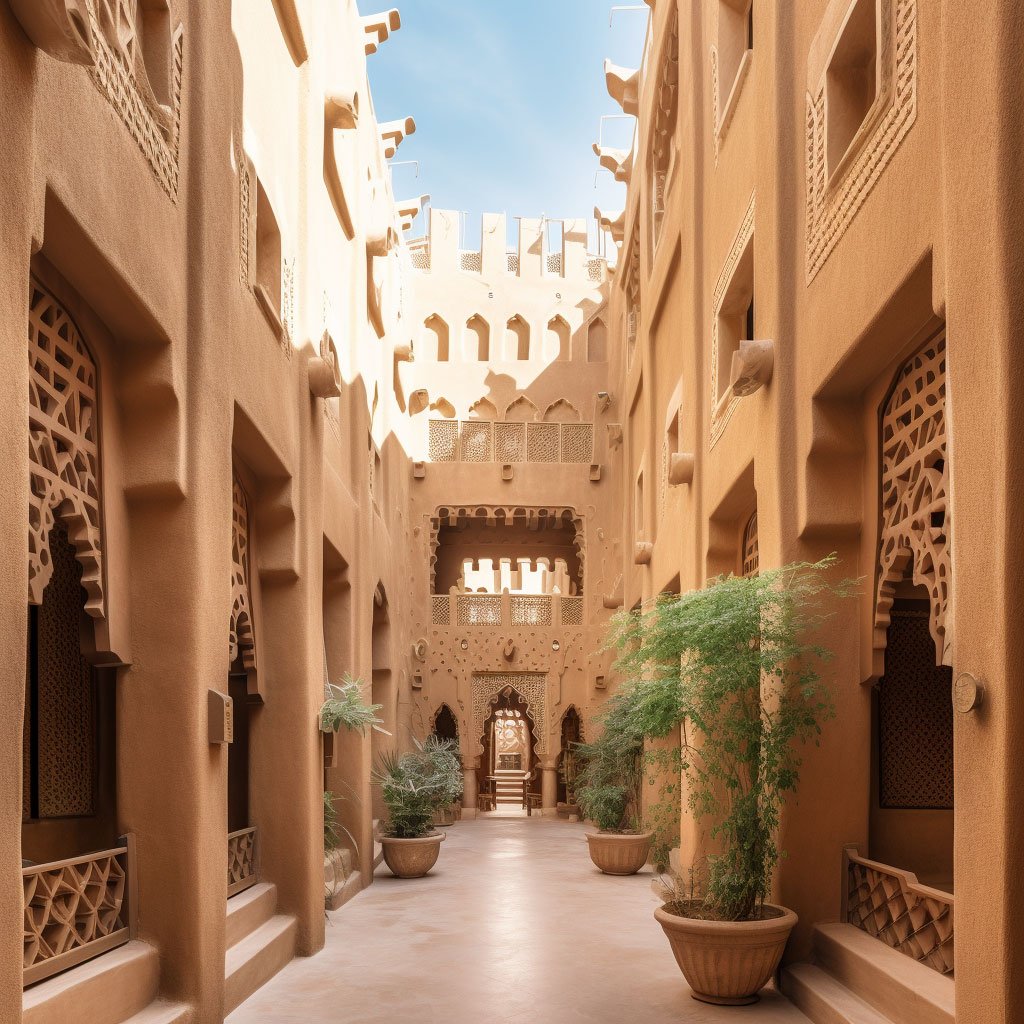
Saudi Arabia, with its rich cultural heritage, is a treasure trove of historical landmarks and traditional arts. From ancient archaeological sites to beautifully preserved palaces and vibrant art forms, the country offers a fascinating glimpse into its illustrious past. In this article, we invite you to embark on a journey through Saudi Arabia’s cultural heritage, where we explore its historical landmarks and immerse ourselves in the captivating world of traditional arts.
Ad-Diriyah: The Cradle of Saudi Arabia’s History
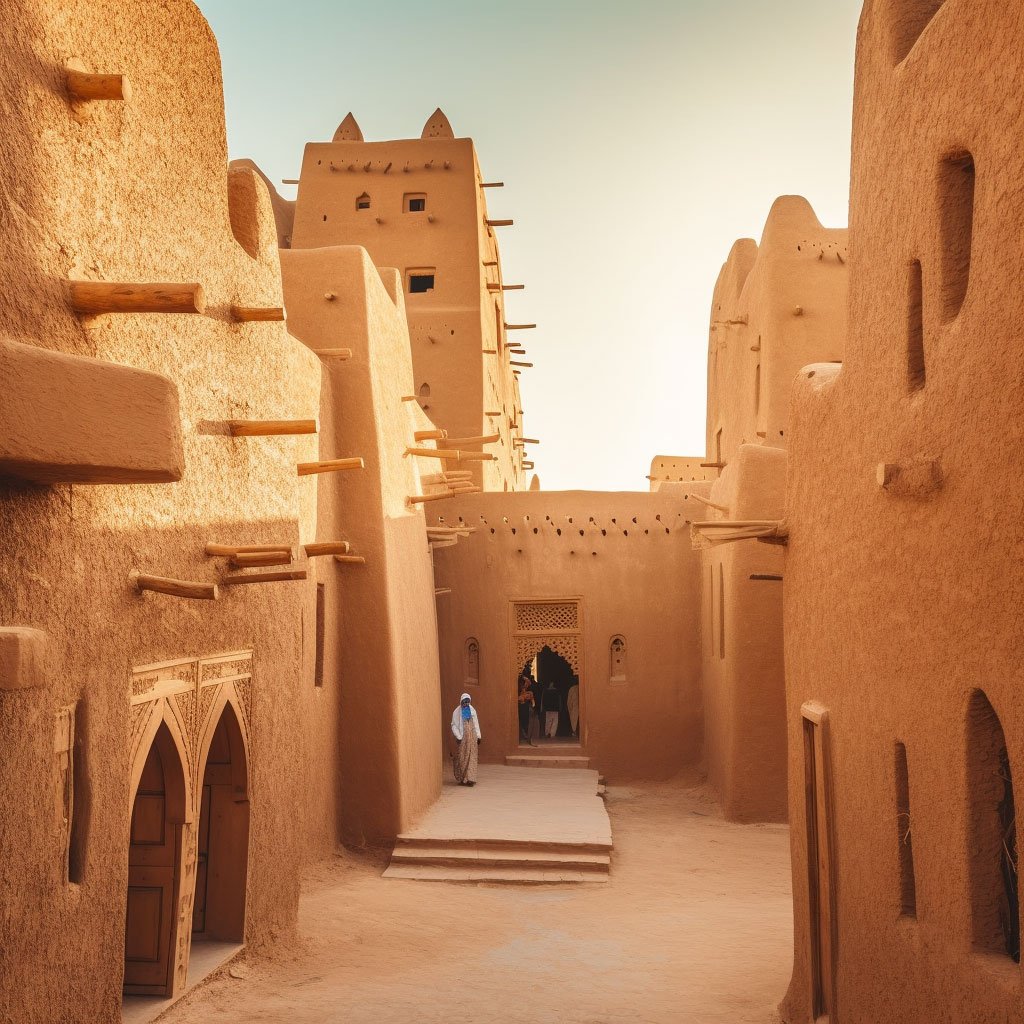
Ad-Diriyah, nestled on the outskirts of Riyadh, is a place of great historical significance and serves as the birthplace of the first Saudi state. As the ancestral home of the Al Saud family, Ad-Diriyah holds a special place in the hearts of Saudis and showcases the traditional mud-brick architecture and intricate designs that are deeply rooted in Saudi Arabian culture.
Ad-Diriyah’s history can be traced back over 300 years when it emerged as the capital and stronghold of the Saudi dynasty. Its strategic location along the banks of the Wadi Hanifa provided a natural defense and played a crucial role in the region’s development.
Walking through the narrow alleyways of Ad-Diriyah’s historic quarter, known as At-Turaif, visitors can immerse themselves in the rich heritage of the area. The mud-brick buildings, adorned with geometric patterns and latticed windows, exude a sense of timeless beauty. These architectural gems are a testament to the craftsmanship and ingenuity of the past.
The At-Turaif district has been meticulously restored, allowing visitors to explore its fascinating history. The Salwa Palace, one of the prominent landmarks in Ad-Diriyah, showcases the opulence and grandeur of the Saudi royal family. Its ornate interiors and traditional decor transport visitors to a bygone era.
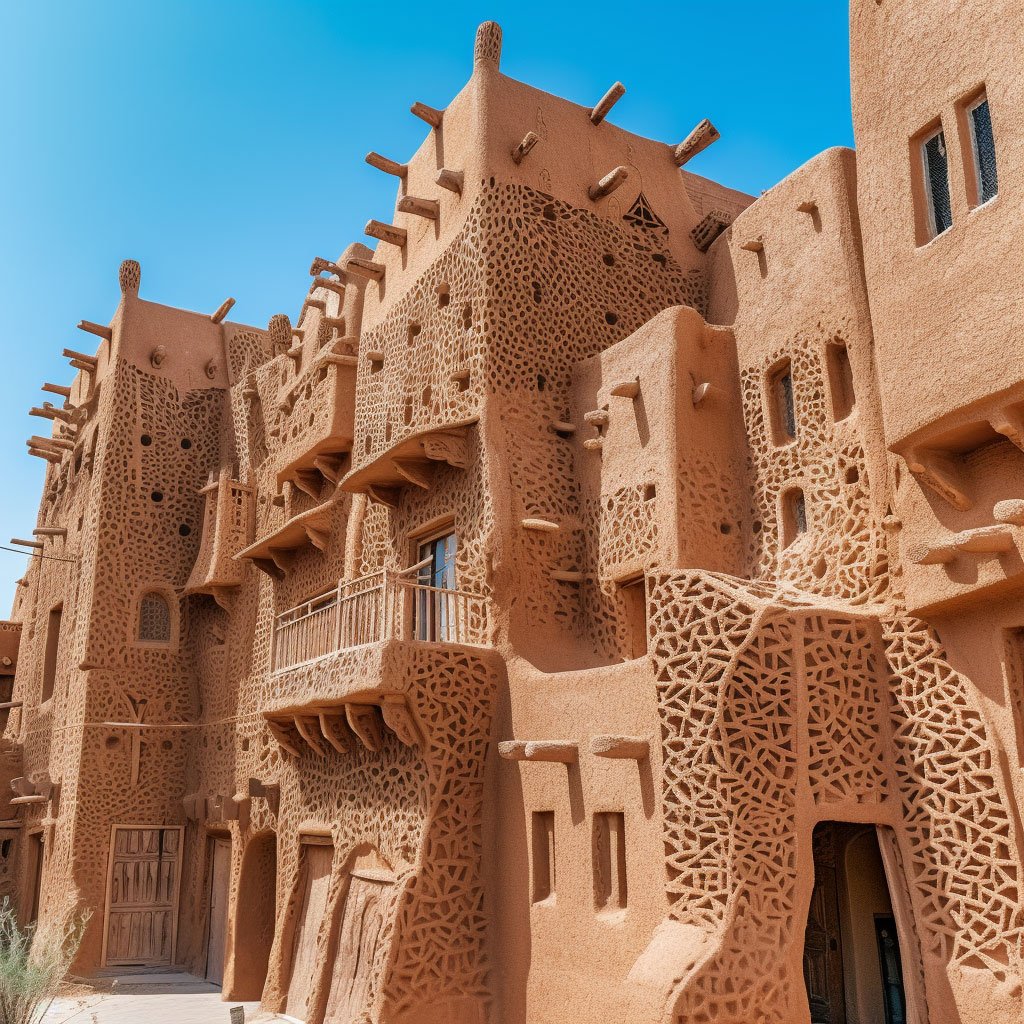
Ad-Diriyah is not just a place frozen in time; it is a vibrant cultural hub that celebrates Saudi Arabian heritage. The district is home to museums, art galleries, and cultural centers that showcase the country’s rich traditions and artistic expressions. Visitors can engage in traditional activities, such as calligraphy and pottery workshops, and learn about Saudi Arabian customs and rituals.
As you wander through Ad-Diriyah’s charming streets, the air is filled with the echoes of history and the spirit of a proud nation. The locals’ warm hospitality and their passion for preserving their cultural heritage create an inviting atmosphere that makes every visit to Ad-Diriyah an unforgettable experience.
Ad-Diriyah is a living testament to Saudi Arabia’s rich past and serves as a reminder of the country’s deep-rooted traditions. Exploring its historical landmarks and immersing oneself in its vibrant culture allows visitors to connect with the essence of Saudi Arabia. It is a journey through time and a chance to appreciate the resilience and spirit of a nation that has thrived for centuries.
So, step into Ad-Diriyah and let its captivating history and architectural wonders transport you to the cradle of Saudi Arabia’s past. Experience the magic of this enchanting place and embrace the stories that have shaped the country’s identity. Ad-Diriyah is a treasure waiting to be discovered, offering a glimpse into the heritage that makes Saudi Arabia truly unique.
Mada’in Saleh: The Magnificent Nabatean Legacy
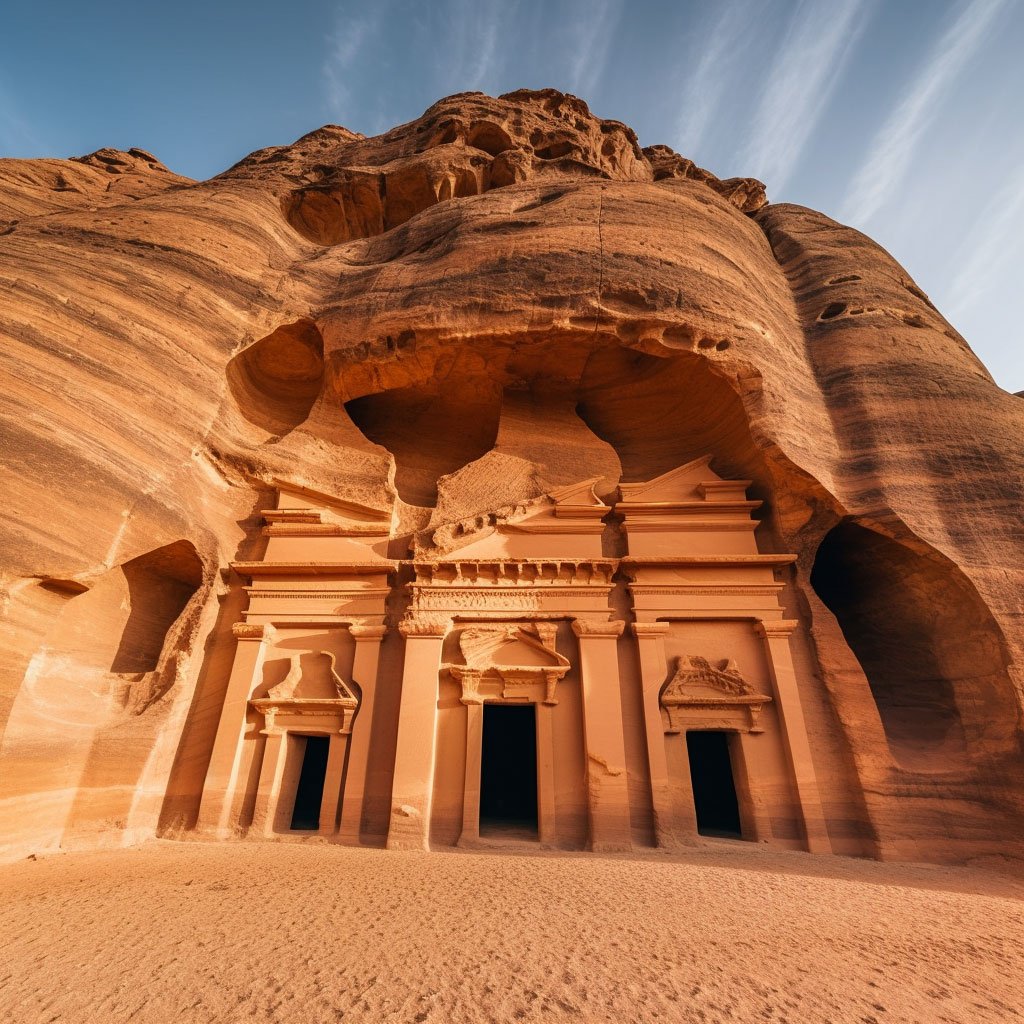
Mada’in Saleh, also known as Al-Hijr, is a UNESCO World Heritage site and a remarkable testament to the Nabatean civilization that once thrived in the northwestern region of Saudi Arabia. This ancient archaeological site is a hidden gem, often overshadowed by its more famous counterpart, Petra in Jordan. However, Mada’in Saleh holds its own unique charm and historical significance.
Mada’in Saleh was the southernmost settlement of the Nabateans, a civilization known for their advanced architectural techniques and extensive trade networks. The site is home to more than 100 well-preserved tombs carved into the sandstone cliffs, adorned with intricate facades, inscriptions, and intricate reliefs.
As you explore Mada’in Saleh, you will be transported back in time, walking in the footsteps of the Nabateans who thrived here over 2,000 years ago. The tombs reflect the wealth and social status of their occupants, showcasing elaborate details and unique architectural features.
One of the most iconic features of Mada’in Saleh is the Qasr Al-Farid, a lone and majestic tomb standing in isolation amidst the vast desert landscape. Its intricate facade, featuring columns and intricate carvings, showcases the skilled craftsmanship of the Nabateans.
The surrounding landscape of Mada’in Saleh is equally breathtaking, with rugged cliffs, towering sandstone formations, and vast desert expanses. The contrasting colors of the rocks, ranging from golden hues to reddish tones, create a stunning backdrop for the ancient ruins.

Apart from the tombs, Mada’in Saleh also boasts several other archaeological remains, including dwellings, wells, and ancient inscriptions that provide valuable insights into the daily lives and cultural practices of the Nabateans.
Visiting Mada’in Saleh is a journey of discovery, where you can marvel at the architectural marvels of the Nabateans, appreciate the intricate details of the carvings, and imagine the vibrant life that once filled this ancient city.
But Mada’in Saleh is not just a historical site; it is a place of wonder and awe, where the past converges with the present. Its remote location and the serene atmosphere make it an ideal destination for those seeking tranquility, solitude, and a deeper connection with history.
As you explore the site, the stories of the Nabateans come alive, and you can’t help but be captivated by the mysteries and grandeur of this ancient civilization. Mada’in Saleh stands as a reminder of the remarkable legacy left by the Nabateans and their enduring impact on the region.
So, embark on a journey to Mada’in Saleh and witness the magnificence of this Nabatean legacy. Let the awe-inspiring tombs and the rugged beauty of the desert transport you to a time long gone. Mada’in Saleh is a hidden gem, waiting to be discovered and appreciated for its historical and cultural significance.
Al-Ula: A Journey through Time

Al-Ula is a captivating destination located in the northwestern region of Saudi Arabia. With its rich history and stunning landscapes, Al-Ula offers visitors a unique journey through time. From ancient rock art to magnificent archaeological sites, this hidden gem is a treasure trove of cultural and historical wonders.
As you step foot in Al-Ula, you will be transported back thousands of years. The area is renowned for its rock art, with thousands of petroglyphs depicting various scenes of daily life, hunting, and spiritual beliefs. These intricate carvings are a testament to the ancient civilizations that once thrived in this region.
One of the highlights of Al-Ula is the UNESCO World Heritage site of Madain Saleh (Al-Hijr). Similar to Petra in Jordan, Madain Saleh is an ancient Nabatean city carved into the sandstone cliffs. Its well-preserved tombs and rock-cut facades showcase the architectural prowess and grandeur of the Nabateans.
Another remarkable feature of Al-Ula is the historic city of Dadan, which was once the capital of the ancient Lihyanite Kingdom. Explore the ruins of ancient buildings, tombs, and inscriptions that provide insights into the lives of the Lihyanites and their rich cultural heritage.
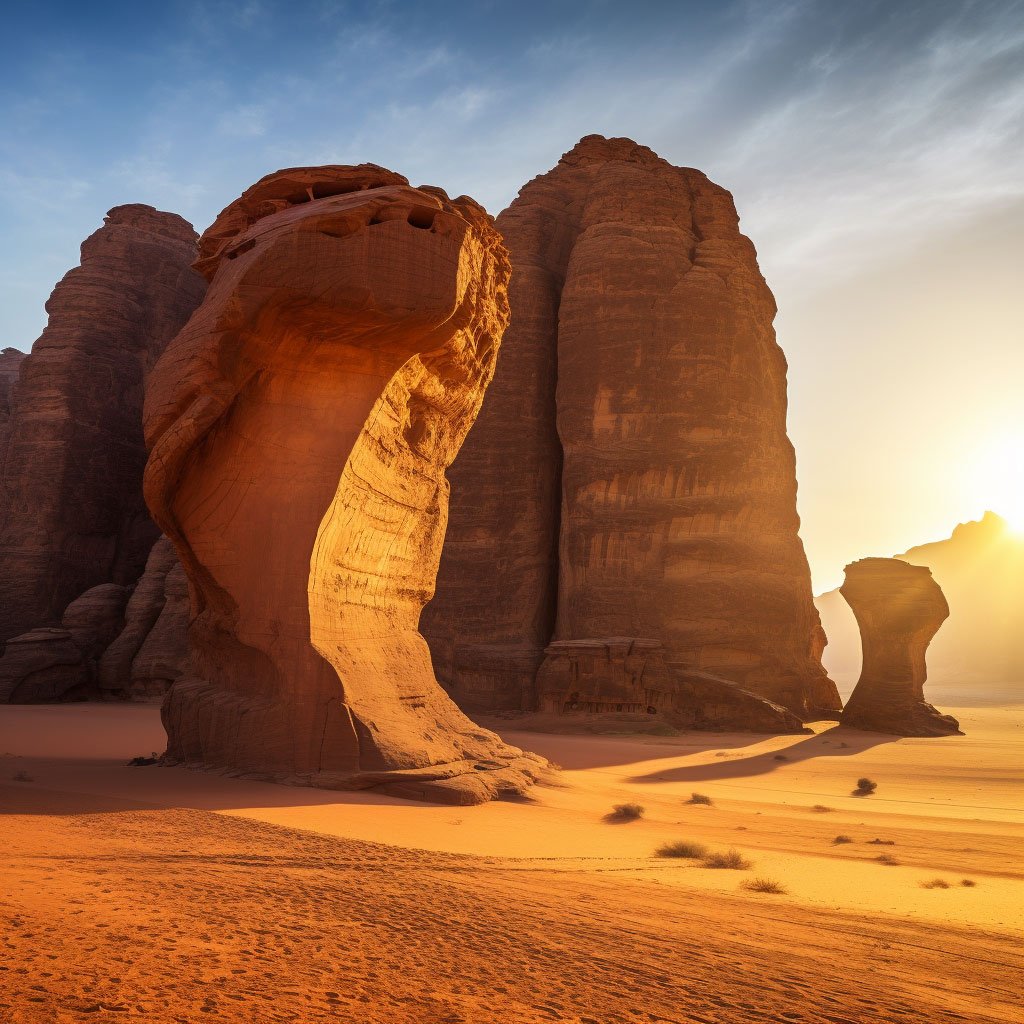
Al-Ula is also home to the iconic Al-Ula Old Town, with its mud-brick houses and narrow streets that exude an authentic Arabian atmosphere. Take a leisurely stroll through the town, interact with the friendly locals, and immerse yourself in the traditional culture of the region.
The natural beauty of Al-Ula is equally mesmerizing. The region is dotted with breathtaking rock formations, such as the towering Elephant Rock and the dramatic rock valleys of Al-Khuraymat and Al-Khuraibah. These geological wonders create a surreal landscape that is perfect for exploration and photography.
Additionally, Al-Ula boasts vast palm groves, lush oases, and the stunning Al-Ula Oasis, where you can relax amidst tranquil surroundings and appreciate the harmony between man and nature.
As you explore Al-Ula, you will find a perfect balance between history, culture, and nature. The region offers a range of activities, including hiking, camel rides, and cultural experiences that allow you to connect with the heritage of Saudi Arabia.
Al-Ula is a destination that truly takes you on a journey through time. It captures the essence of the ancient civilizations that once flourished in this land, and it invites you to immerse yourself in their stories and traditions.
So, embark on a remarkable journey to Al-Ula and uncover its hidden treasures. Let the ancient rock art, magnificent archaeological sites, and breathtaking landscapes captivate your senses and ignite your curiosity. Al-Ula is a place where the past comes alive, offering a unique and unforgettable experience for every traveler.
Diriyah Art Oasis: Where Tradition Meets Contemporary Art

Diriyah, a historic city located on the outskirts of Riyadh, Saudi Arabia, is known for its rich cultural heritage and traditional architecture. However, it is also becoming a hub for contemporary art with the emergence of the Diriyah Art Oasis. This unique art space brings together the beauty of tradition and the creativity of modern artistic expressions.
The Diriyah Art Oasis is a place where artists and art enthusiasts gather to celebrate the fusion of traditional Saudi Arabian culture and contemporary art forms. The venue itself is a work of art, with its traditional mud-brick walls and architectural elements combined with modern design concepts.
Inside the Art Oasis, visitors are treated to a wide range of artistic experiences. From captivating exhibitions featuring paintings, sculptures, and multimedia installations, to immersive art installations that engage all the senses, there is something to inspire and delight every visitor.
One of the highlights of the Diriyah Art Oasis is the opportunity to witness live art performances and interactive art workshops. Artists from various disciplines come together to showcase their skills and share their creative process with the audience. It’s a chance to engage with the artists, learn about their inspirations, and even participate in hands-on activities to create your own artwork.

The Diriyah Art Oasis also serves as a platform for emerging local artists to showcase their talents and gain recognition. It provides a supportive environment for artistic experimentation and encourages the exploration of new ideas and techniques. By promoting contemporary art, the Art Oasis contributes to the cultural growth and artistic vibrancy of the region.
Moreover, the Art Oasis hosts cultural events and festivals that celebrate the diversity of Saudi Arabian arts and heritage. These events feature traditional music performances, dance shows, poetry recitations, and culinary experiences that showcase the richness of Saudi Arabian traditions.
In addition to the artistic offerings, the Diriyah Art Oasis provides a tranquil and scenic environment. Set amidst the historical charm of Diriyah, visitors can wander through beautifully landscaped gardens, relax in shaded seating areas, and enjoy the serenity of the surroundings. It’s a place where art and nature coexist harmoniously, creating an immersive and inspiring experience.
The Diriyah Art Oasis is a testament to the evolving cultural landscape of Saudi Arabia. It bridges the gap between tradition and modernity, inviting visitors to appreciate the country’s rich heritage while embracing the dynamic and ever-changing world of contemporary art.
So, if you are a lover of art, culture, and creativity, the Diriyah Art Oasis is a must-visit destination. Immerse yourself in the vibrant colors, innovative designs, and captivating performances that showcase the best of Saudi Arabian artistic talent. Let this artistic haven be your gateway to discovering the beauty and diversity of Saudi Arabian art in all its forms.
Saudi Arabian Calligraphy: The Art of Beautiful Writing
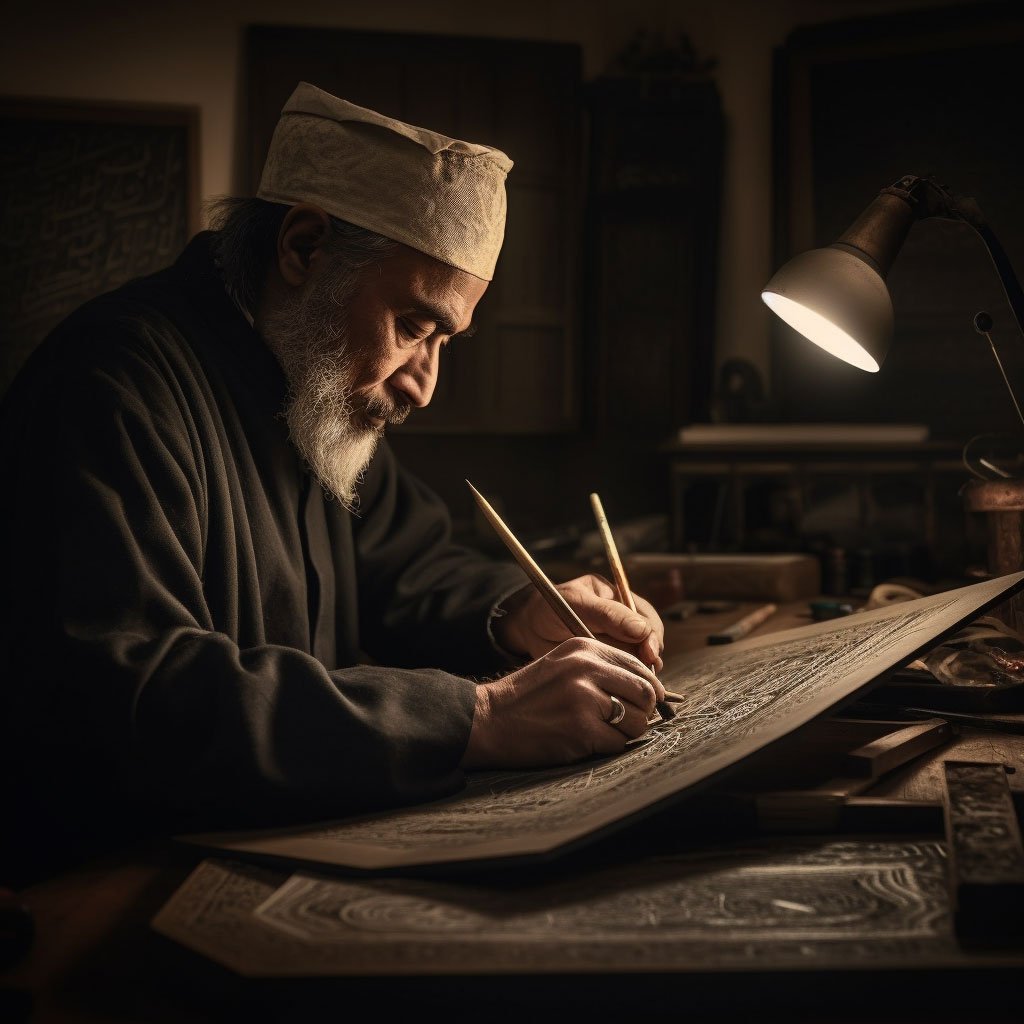
Saudi Arabian calligraphy is a captivating art form that has deep roots in the country’s cultural heritage. It is a visual expression of the Arabic language, combining intricate designs, rhythmic patterns, and harmonious strokes to create stunning works of art. In this article, we will explore the art of Saudi Arabian calligraphy, its historical significance, and its enduring beauty.
Calligraphy holds a special place in Saudi Arabian culture, as the Arabic language and its script, known as the Arabic alphabet, are deeply revered. The art of calligraphy is believed to have originated during the early days of Islam when the revelation of the Quran sparked a renewed interest in the written word.
Throughout history, calligraphy played a crucial role in preserving and transmitting knowledge, as well as serving as a means of artistic expression. It adorned the walls of mosques, palaces, and important religious texts, showcasing the beauty and power of the written word.
Saudi Arabian calligraphy encompasses various styles and scripts, each with its own distinct characteristics. One of the most prominent styles is Thuluth, known for its elongated and flowing letters. Thuluth is often used for decorative purposes in architectural ornamentation and manuscript illumination.
Another popular style is Naskh, characterized by its clear and legible script. Naskh is commonly used for writing the Quran and other religious texts, as well as in official documents and publications.

The art of Saudi Arabian calligraphy requires not only skill but also a deep understanding of the Arabic language and its nuances. Calligraphers undergo years of rigorous training to master the precise techniques of shaping and spacing the letters, creating a harmonious composition.
In recent years, Saudi Arabian calligraphy has experienced a resurgence, with a renewed interest in preserving and promoting this ancient art form. Calligraphy exhibitions, workshops, and festivals have become more prevalent, providing a platform for both established calligraphers and emerging talents to showcase their work.
Moreover, calligraphy has found its way into contemporary design, influencing various creative disciplines such as graphic design, typography, and even fashion. The beauty and elegance of Saudi Arabian calligraphy are now being appreciated not only within the country but also on an international scale.
The art of Saudi Arabian calligraphy reflects the country’s cultural identity, its deep-rooted traditions, and its devotion to the Arabic language. It serves as a powerful reminder of the importance of preserving heritage and celebrating the beauty of the written word.
So, the next time you encounter a piece of Saudi Arabian calligraphy, take a moment to appreciate the skill, precision, and artistic vision that went into creating it. Let it inspire you to explore the rich world of Arabic script and the intricate artistry of calligraphy. Allow the art of beautiful writing to captivate your senses and open a window into the rich cultural heritage of Saudi Arabia.
Folkloric Dance and Music: A Celebration of Saudi Arabian Traditions
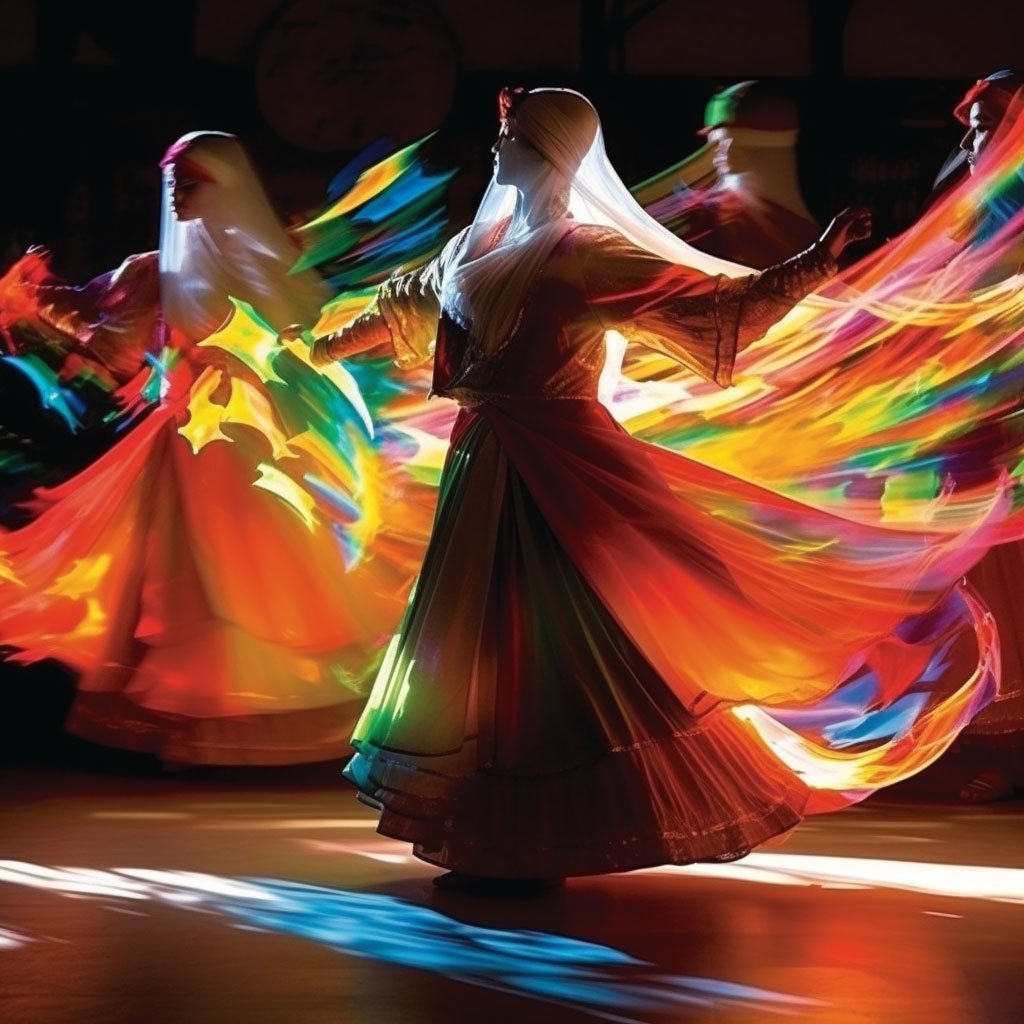
Saudi Arabia is a land rich in cultural traditions, and one of the most vibrant expressions of its heritage is through folkloric dance and music. In this article, we will delve into the captivating world of Saudi Arabian folkloric dance and music, exploring the diverse styles, enchanting rhythms, and the celebration of traditions they represent.
Folkloric dance and music have been an integral part of Saudi Arabian culture for centuries, serving as a means of storytelling, expression, and community celebration. These art forms reflect the diverse cultural influences that have shaped Saudi Arabia over the years, including Bedouin, Arab, African, and Persian traditions.
One of the most famous Saudi Arabian dance styles is the Ardah, a highly energetic and rhythmic performance that showcases the pride, strength, and unity of the Saudi people. The Ardah features a group of men, often armed with swords or sticks, forming two rows and performing synchronized movements to the beat of traditional drums and the chanting of poetic verses.
Another popular dance is the Mizmar dance, which combines music from wind instruments with graceful movements. This dance is often performed during weddings, religious festivals, and other joyous occasions, bringing people together in celebration and creating an atmosphere of joy and merriment.
Saudi Arabian folk music is characterized by its rich melodies, captivating rhythms, and soulful vocals. Traditional instruments such as the oud (a stringed instrument similar to a lute), the rababah (a bowed instrument), and the darbuka (a type of drum) are commonly used to create enchanting musical compositions.
The lyrics of Saudi Arabian folk songs often reflect themes of love, nature, patriotism, and tales of heroism. These songs are passed down through generations, preserving the cultural narratives and connecting people to their roots.
In recent years, there has been a renewed interest in Saudi Arabian folkloric dance and music, with efforts to preserve and promote these traditions. Cultural festivals and events showcase the talents of dancers, musicians, and singers, providing a platform for the expression and appreciation of Saudi Arabian cultural heritage.
Moreover, folkloric dance and music have become a source of pride and identity for the Saudi people. They serve as a reminder of their history, values, and unique traditions, fostering a sense of belonging and cultural continuity.
By embracing folkloric dance and music, Saudi Arabia celebrates its cultural diversity and honors the legacy of its ancestors. These art forms offer a glimpse into the spirit, passion, and creativity of the Saudi people, inviting both locals and visitors to immerse themselves in the vibrant tapestry of Saudi Arabian traditions.
So, whether you find yourself captivated by the rhythmic beats of the Ardah or enchanted by the soul-stirring melodies of Saudi Arabian folk songs, take a moment to appreciate the beauty and significance of these artistic expressions. Let the enchanting world of Saudi Arabian folkloric dance and music transport you to a realm where traditions come alive, stories are shared, and the rich cultural heritage of Saudi Arabia is celebrated.
Traditional Crafts and Souks: Preserving Artistic Traditions
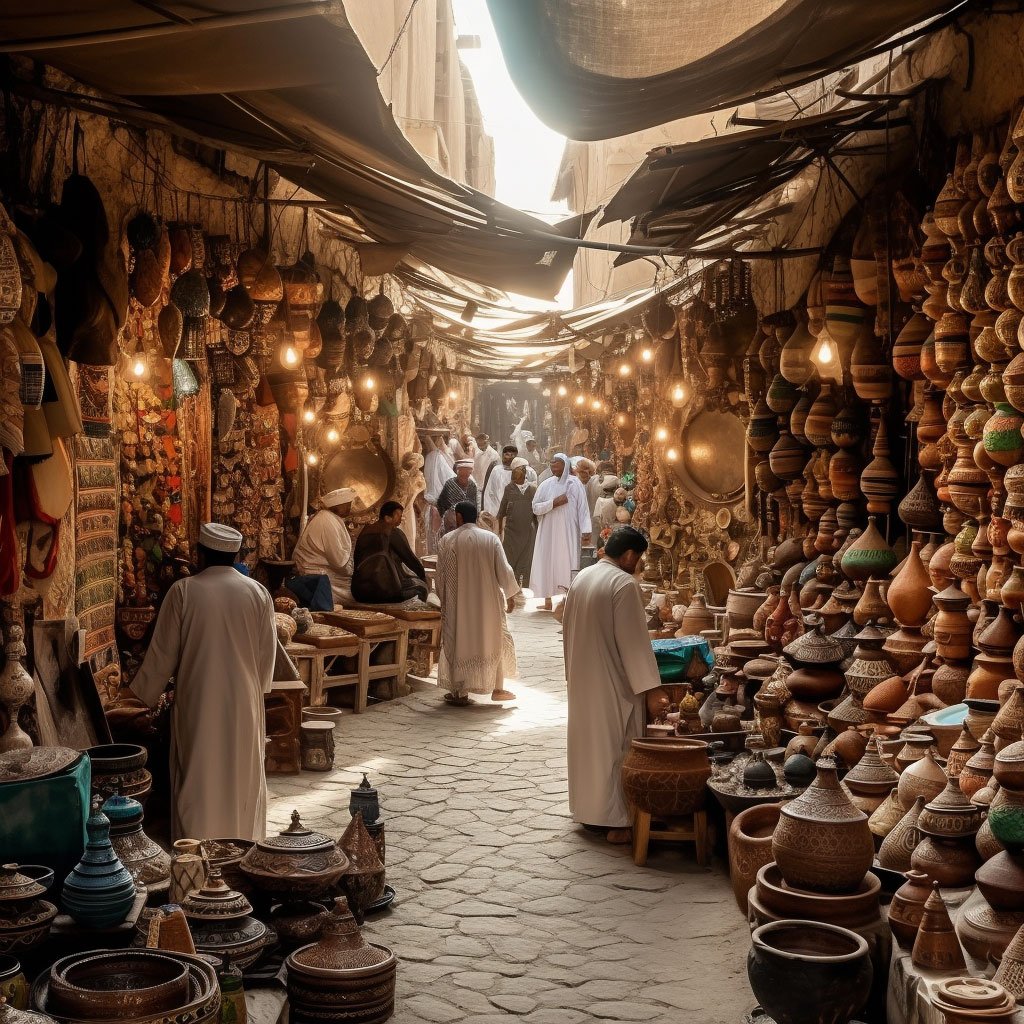
In the bustling streets of Saudi Arabia, traditional crafts and souks (markets) offer a glimpse into the rich artistic heritage of the country. In this article, we will explore the vibrant world of Saudi Arabian traditional crafts, highlighting the skill and craftsmanship that goes into creating unique and beautiful works of art.
Saudi Arabia boasts a diverse range of traditional crafts, each with its own distinct style and historical significance. These crafts have been passed down through generations, preserving the artistic traditions and cultural identity of the Saudi people.
One of the most renowned traditional crafts in Saudi Arabia is weaving. Skilled artisans create exquisite textiles, rugs, and carpets using techniques that have been perfected over centuries. The intricate designs and vibrant colors of Saudi Arabian textiles reflect the cultural influences of the region and showcase the mastery of the weavers.
Pottery is another art form that holds a special place in Saudi Arabian culture. Artisans mold clay into beautiful vessels, plates, and decorative items, often adorning them with intricate patterns and motifs. The pottery reflects the local aesthetics and craftsmanship, and each piece tells a story of the region’s history and traditions.
Metalwork is also a prominent craft in Saudi Arabia, with skilled artisans crafting intricate designs in gold, silver, and brass. From jewelry to decorative items, the art of metalwork showcases the precision and attention to detail of the craftsmen.
Woodwork is yet another traditional craft that flourishes in Saudi Arabia. Talented artisans carve intricate designs on wooden furniture, doors, and decorative objects, creating unique pieces that blend beauty and functionality.
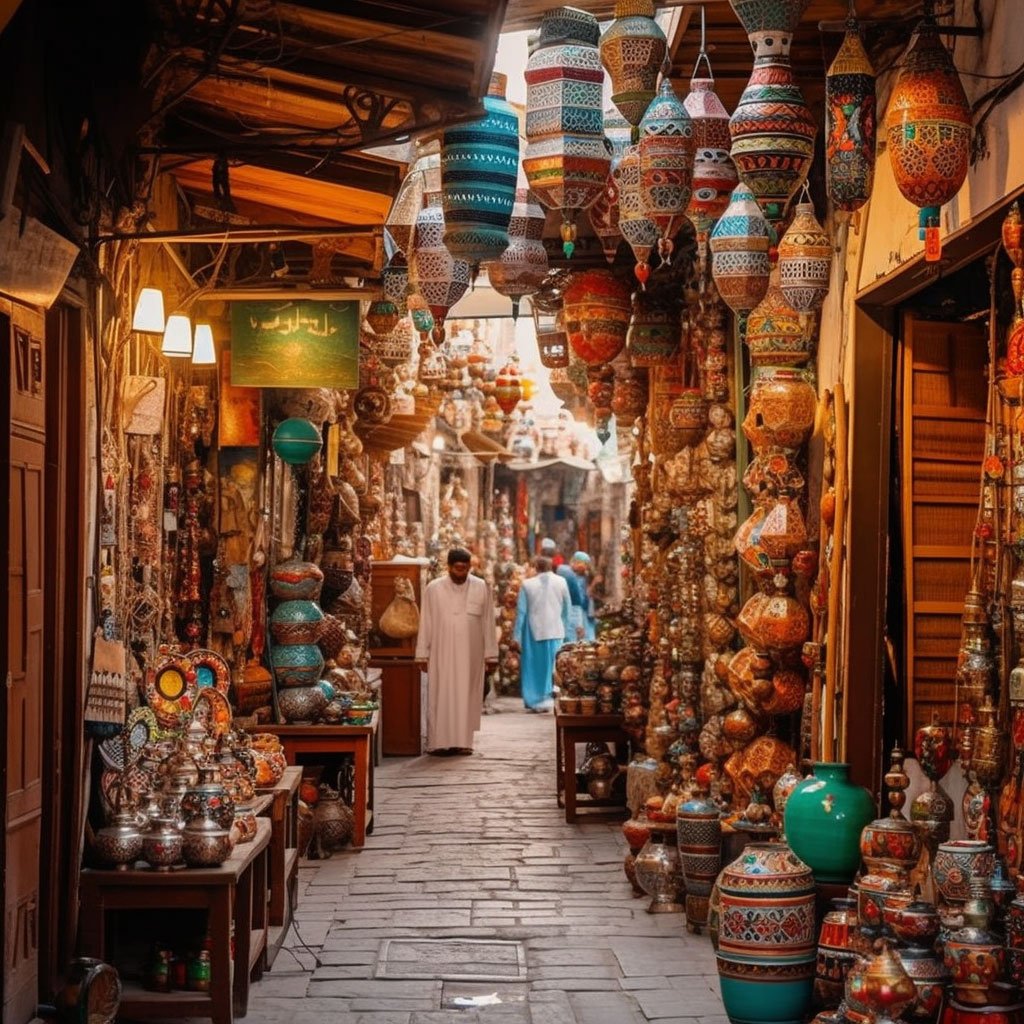
To experience the rich artistic heritage of Saudi Arabia, one must explore the traditional souks. These bustling markets are a treasure trove of handicrafts, where visitors can immerse themselves in the vibrant colors, smells, and sounds of the local culture. Souks are filled with stalls selling textiles, pottery, metalwork, carpets, and an array of other traditional crafts, providing an opportunity to witness the craftsmanship firsthand and engage with the artisans.
The souks not only serve as commercial hubs but also as cultural spaces where artistic traditions are preserved and celebrated. They are places where locals and visitors can appreciate the beauty of Saudi Arabian crafts, learn about their historical significance, and support the artisans who keep these traditions alive.
In recent years, there has been a renewed interest in traditional crafts, with efforts to promote and preserve these artistic traditions. Cultural festivals and events highlight the talents of craftsmen, showcasing their skills and creating a platform for the exchange of ideas and techniques.
By valuing and preserving traditional crafts, Saudi Arabia honors its cultural heritage and promotes sustainable economic development. These crafts are not just decorative objects; they are tangible expressions of Saudi Arabian identity, telling stories of the past and connecting generations.
So, the next time you find yourself wandering through the enchanting souks of Saudi Arabia, take a moment to appreciate the skill, creativity, and cultural significance behind the intricate textiles, pottery, metalwork, and woodwork. Embrace the opportunity to bring a piece of Saudi Arabian craftsmanship into your own home, allowing the traditions and artistry to continue to thrive and inspire for generations to come.
Conclusion
Saudi Arabia’s rich cultural heritage is a testament to its fascinating history and the artistic expressions of its people. Exploring the historical landmarks and traditional arts of the country unveils a tapestry of captivating stories and unparalleled beauty. From the ancient splendor of Ad-Diriyah and Mada’in Saleh to the vibrant art scenes and traditional crafts, Saudi Arabia invites visitors to immerse themselves in its cultural richness. Let this article inspire you to embark on a journey of discovery and appreciation for the rich cultural heritage that makes Saudi Arabia truly unique.